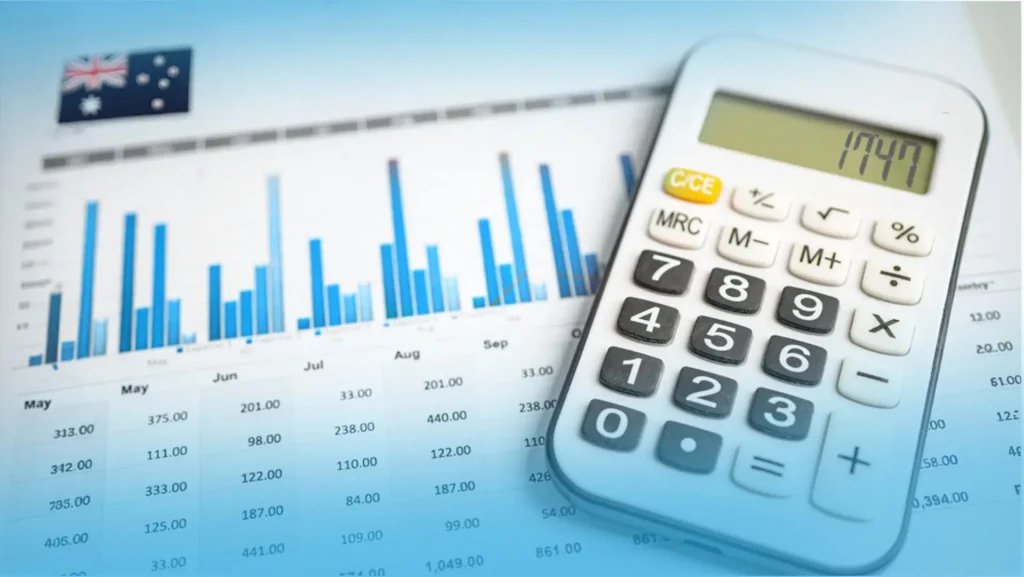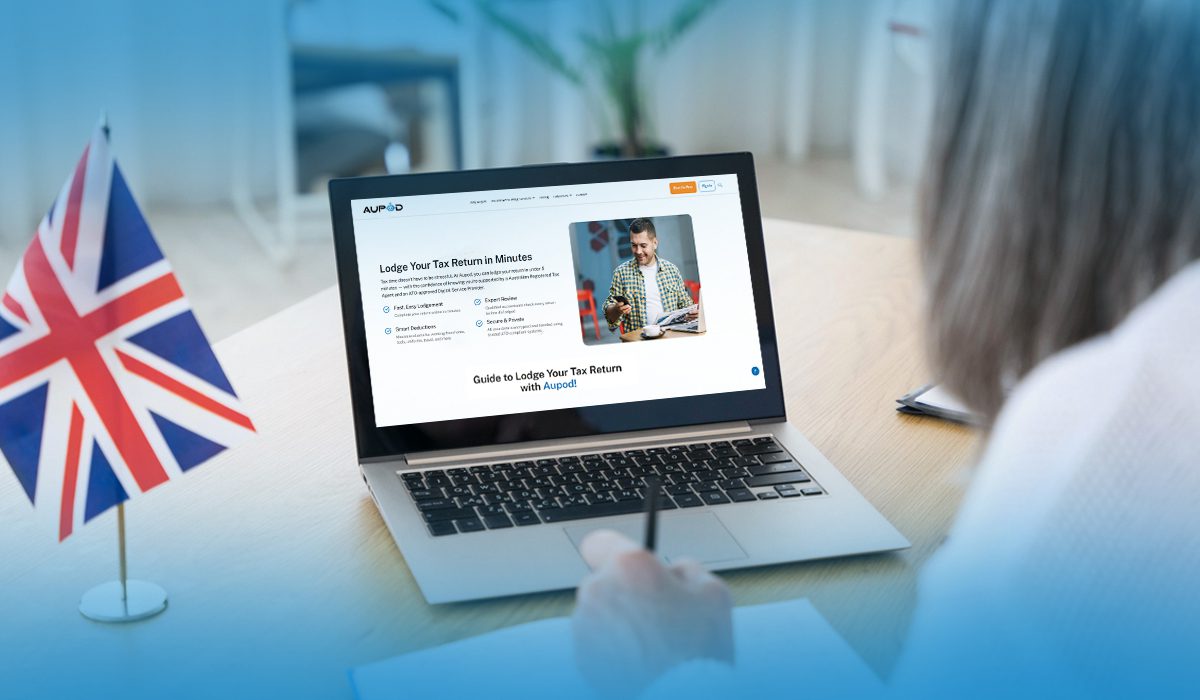Do you know which bracket you’re in under the Australian income tax rates 2025–26?
These brackets show how much tax you need to pay based on income levels. Australia has a progressive tax system—the higher your income, the higher the marginal tax rate on each extra dollar.
With living costs rising and the latest Federal Budget bringing adjustments to tax offsets and Medicare levy thresholds, it’s important to understand which tax bracket applies to you. Applying the correct rate and claiming all eligible deductions can lower taxable income and help you keep more of your hard-earned money.
At Aupod, we’re here to make your tax journey simpler and stress-free.
Rundown of Australian Income Tax Brackets and Rates (2025–26)
Australia’s tax system is progressive, which means people on lower incomes pay less tax, while higher earners pay more. In 2025–26, living costs remain high, and budget changes will impact many middle-income households.
By using the Australia’s income tax rates 2025 and 2026, taxpayers can estimate their tax liability, plan salary packaging, and claim deductions more effectively.
What are the Tax Brackets in Australia in 2025–26 for Residents?
The official Australian income tax rates for 2025-26 (residents).
| Taxable Income | Tax Rate | Tax Payable |
| $0 – $18,200 | 0% | Nil |
| $18,201 – $45,000 | 16% | 16c for every $1 over $18,200 |
| $45,001 – $135,000 | 30% | $4,288 + 30c for every $1 over $45,000 |
| $135,001 – $190,000 | 37% | $31,288 + 37c for every $1 over $135,000 |
| $190,001+ | 45% | $51,638 + 45c for every $1 over $190,000 |
Note: The Medicare levy of 2% applies in addition to the above.
Example: A resident earning $50,000 doesn’t pay 30% on their entire income. Instead, they pay:
- 0% on the first $18,200,
- 16% on income from $18,201–$45,000,
- 30% only on the remaining $5,000.
Tax Rates in Australia in 2025–26 for Non-Residents
The $18,200 tax-free threshold does not apply to non-residents. They pay tax on every dollar earned in Australia.
| Taxable Income | Tax Rate | Tax Payable |
| $0 – $135,000 | 30% | 30c for every $1 |
| $135,001 – $190,000 | 37% | $40,500 + 37c for every $1 over $135,000 |
| $190,001+ | 45% | $60,950 + 45c for every $1 over $190,000 |
Comparison: A resident earning $40,000 pays less than $4,500 in tax after offsets. A non-resident with the same income pays about $12,000.
Working Holiday Maker (WHM) Tax Rates (2025–26)
For WHM visa holders (subclass 417/462):
| Taxable Income | Tax Rate |
| $0 – $45,000 | 15% |
| $45,001 – $135,000 | 30% |
| $135,001 – $190,000 | 37% |
| $190,001+ | 45% |
Medicare Levy and Medicare Levy Surcharge (MLS)
- Standard levy: 2% of taxable income for most residents.
- Medicare Levy Surcharge (MLS): Applies if you don’t have private hospital cover and your income is above certain thresholds.
2025–26 MLS thresholds:
- Singles: $101,000+
- Families: $202,000+
If you wait until after age 31 to get private health insurance, you’ll also face Lifetime Health Cover (LHC) loading.
Income Tax Offsets and Rebates for 2025-26
- Low Income Tax Offset (LITO): Up to $700 for incomes under $66,667.
- Seniors and Pensioners Tax Offset (SAPTO): Reduces tax for eligible seniors and pensioners.
- Private Health Insurance Rebate: Government rebate on premiums depending on income tier.
The income tax offsets lower the tax bills of Australian residents. With the $18,200 tax-free threshold and LITO, you can earn up to $22,575 in 2025–26 before paying any income tax.
Assessable Income
Assessable income is all income subject to tax once it exceeds the tax-free threshold. It includes:
- Employment income: salaries, wages, commissions, bonuses, parental leave pay, redundancy payouts, allowances, and non-cash benefits like company cars.
- Foreign income: must be declared if you’re a tax resident (credits may apply).
- Crowdfunding income: taxable if it’s business or profit-related.
- Government payments: some are taxable (e.g., Age Pension), some are not but still need declaring.
- Investment income: interest, dividends, rent, capital gains.
- Super pensions & annuities: certain elements are taxable depending on age.
- Business, partnership & trust income: must be declared.
Employment Income Tax rates for 2025 & 26
This includes all the incomes you receive for full-time, part-time jobs, including;
- Salary, wages, commissions, bonuses, parental leave pay, or insurance payments like income protection or workers’ compensation.
- Extra payments from your employer, such as for travel, car use, clothing, meals, laundry, or special work duties.
- Tips, awards, or discounted employee shares.
- Money you get when leaving a job, such as unused leave payouts.
- Non-cash benefits worth more than $2,000 a year (e.g., use of a company car or your employer paying some private expenses). You don’t pay tax directly on these, but they are reported and can affect eligibility for government benefits.
Foreign Income
If you’re an Australian tax resident, you must declare any foreign income, even if it was already taxed overseas. The ATO may give credits or exemptions to avoid double taxation.
Crowdfunding Income
Money raised through crowdfunding can be taxable if it’s part of a business or profit-making activity.
Government payments
Government payments, like the Age Pension or carer payments, must be declared in your tax return. Some are tax-free, but they still need to be included because they can affect your eligibility for other benefits and offsets.
Investment Income
Investment income includes:
- Interest from bank accounts or other financial institutions.
- Dividends from shares or managed funds.
- Rent from investment properties.
- Capital gains occur when you sell an asset for a profit.
Super Pensions and Annuities
If you get a pension from your super fund, it can have three parts:
- Taxed element – tax was already paid by the fund.
- Untaxed element – tax still needs to be paid.
- Tax-free element – no tax is payable.
Depending on your age, you may need to include the taxed and untaxed parts as income when you do your tax return.
If you receive money from an annuity (a regular income stream), it usually has both taxable and tax-free parts. You must declare the taxable part in your return.
Business, Partnership and Trust Income
- If you run a business, you must declare all business income in your tax return. Sole traders don’t need a separate business return.
- If you are in a partnership, you must declare your share of the partnership’s income or loss.
- If you receive income from a trust, you must declare your share, even if you didn’t actually receive the money.
Other Notes on Assessable Income
Some of your income is automatically reported to the ATO, like wages from your employer or interest from the bank.
Other payments are not assessable income and don’t need to be taxed, such as:
- Certain insurance payouts (e.g., permanent disability).
- The tax-free part of termination payments when leaving a job.
- Genuine redundancy payments (up to set limits).
Common Deductions to Reduce Taxable Income
Tax deductions lower the total amount of tax you pay, and around 66% of the self-lodgers miss the tax deduction.
- Work-related expenses: uniforms, tools, travel between sites, home office costs.
- Managing tax affairs: tax agent fees, software, BAS preparation.
- Donations: $2+ to registered charities.
- Investment-related deductions: loan interest, management fees, advice costs.
- Personal super contributions: deductible up to $30,000 (2025–26 cap).
Aupod tax accountants help you claim every eligible deduction and maximise your refund.
Work-related expenses
You can claim the costs of things directly related to your job. This may include travel between different worksites (but not your normal commute), buying or cleaning uniforms, protective clothing, tools, and equipment you need for work. If you work from home, you can also claim part of your electricity, internet, and phone costs, as well as office furniture or computers you use for your job.
Cost of managing your tax affairs
The money you spend on looking after your tax obligations is also deductible. This covers fees paid to a registered tax agent, the cost of preparing and lodging your BAS, and even accounting or tax software you use to organise your records.
Donations
Donations of $2 or more to an approved charity or organisation, known as a Deductible Gift Recipient (DGR), can be claimed as a tax deduction. Whether it’s cash, online contributions, or even bucket donations under certain limits, keeping receipts makes sure your generosity reduces your taxable income.
Investment-related deductions
If you earn money from investments, you can often claim the costs of managing them. This includes interest on loans you took to buy shares or property, investment management fees, and financial advice directly related to producing taxable income.
Personal super contributions
You may be able to claim a deduction for extra contributions you make into your super fund, on top of what your employer pays. These are called concessional contributions and are capped at $30,000 for 2025–26. By doing this, you not only save for retirement but also reduce your taxable income.
Aupod’s best tax accountants help you claim every eligible deduction and maximise your refund.
Tax Changes Coming from 1 July 2026
- Lowest bracket reduces from 16% → 15% (then 14% in 2027).
- Cuts for millions of middle-income earners.
- Treasury forecasts lower tax receipts but higher savings.
Practical Examples of How Tax Brackets Work
- Resident earning $40,000: Pays tax only on income above $18,200 → effective rate under 10%.
- Resident earning $90,000: Tax on multiple brackets, effective tax rate ~22%.
- High-income earner $200,000+: Top 45% marginal rate applies only on income over $190,000.
Start Your Smart Tax Journey with Aupod!
The income tax rates for 2025–26 in Australia make it easier to plan, avoid extra costs, and maximise refunds. Things like offsets, rebates, and the Medicare levy can all affect your taxable income.
Don’t risk missing out. Lodge your 2025–26 tax return with Aupod and maximise your refund today. Aupod certified tax professionals stay up to date with all ATO rule changes and obligations:
- Online from just $19, no upfront fees
- Option to pay from your refund later
- Stay updated with ATO rules and deductions
- Avoid ATO penalties
FAQs
How is Australian income tax calculated?
Formula: Assessable income – deductions = Taxable income → Apply tax brackets → Minus offsets → Plus Medicare levy → Minus credits/refundable offsets = Tax payable/refund
Example: On a $70,000 salary:
Taxable income = $70,000 – deductions.
Apply resident tax brackets → ~$12,688 tax.
Add Medicare levy → 2%.
Deduct offsets → reduces payable tax further.
What is the tax-free threshold?
Residents can earn up to $18,200 tax-free. If residency starts mid-year, the threshold is adjusted proportionally.
What is the tax free threshold in Australia in 2025-2026?
The annual taxable income in the future will be below the tax-free threshold ($18,200 for 2025–26).
What is the maximum tax bracket for 2025?
In 2025, the top tax rate remains 37% for individual single taxpayers with incomes greater than $626,350 ($751,600 for married couples filing jointly).



